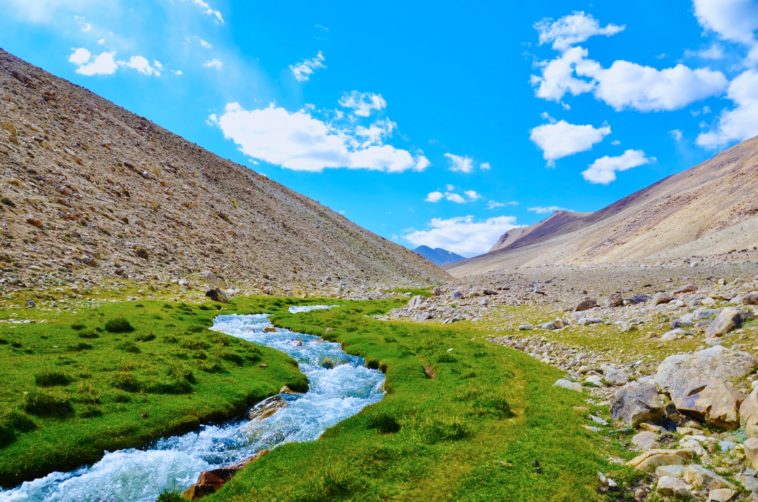Tajikistan, officially known as the Republic of Tajikistan (Tajik: Ҷумҳурии Тоҷикистон, Çumhuriyi Toçikiston; Russian: Республика Таджикистан, Respublika Tadzhikistan), is a sovereign nation located in Central Asia. Characterized by its mountainous terrain, Tajikistan is a landlocked country that shares international borders with four nations: Afghanistan to the south, Uzbekistan to the west, Kyrgyzstan to the north, and China to the east. Additionally, the regions of Khyber Pakhtunkhwa and Gilgit Baltistan in Pakistan are separated from Tajikistan by the narrow, geographically significant Wakhan Corridor.
Geographical Features
Tajikistan's geography is largely dominated by rugged mountains, with more than 90% of its land area covered by mountainous terrains. The Pamir Mountains and the Alay Range are among the prominent mountain ranges found in the country. Elevations can reach as high as 7,495 meters, with Ismoil Somoni Peak, formerly known as Communism Peak, being the highest point. Numerous rivers, such as the Panj and Vakhsh, originate from these mountains and flow through the country, providing essential water resources.
Bordering Countries
| Bordering Country | Direction |
|---|---|
| Afghanistan | South |
| Uzbekistan | West |
| Kyrgyzstan | North |
| China | East |
The Wakhan Corridor serves as a narrow strip of land that separates Tajikistan from Pakistan and provides an important geographical buffer zone in the region. Khyber Pakhtunkhwa and Gilgit Baltistan, both regions in Pakistan, lie on the other side of this corridor.
Demographics and Language
As of the latest census, Tajikistan has a population of approximately 9.5 million people. The predominant ethnic group is Tajik, which makes up about 80% of the population. The official language is Tajik, a variety of Persian. Russian is also widely spoken and understood, particularly in urban areas and among the older population.
Economy
Tajikistan has a GDP of approximately $12.5 billion as of 2021, largely dependent on sectors like agriculture, mining, and remittances from Tajiks working abroad. Cotton, fruits, and grains are the primary agricultural products. The country also possesses substantial mineral resources, including gold, silver, and aluminum.
Religion and Culture
The primary religion in Tajikistan is Islam, with the majority of the population identifying as Sunni Muslims. A minority of the population follows Shia Islam or Ismailism. The country has a rich cultural heritage influenced by Persian, Turkic, and Russian cultures.
Additional Information
| Category | Information |
|---|---|
| Longitude/Latitude | 38.8610° N, 71.2761° E |
| Climate | Continental, Semi-Arid |
| Population | ~9.5 million |
| GDP | ~$12.5 billion (2021) |
| Official Languages | Tajik |
| Currency | Tajikistani Somoni (TJS) |
| Religion | Predominantly Sunni Islam |
| Continent | Asia |
In summary, Tajikistan is a Central Asian country notable for its complex geographical features and diverse cultural influences. As a landlocked nation bordered by four other countries and separated from Pakistan by the Wakhan Corridor, it occupies a strategically important position in the region. With a developing economy primarily centered around natural resources and agriculture, along with a predominantly Islamic cultural identity, Tajikistan offers a unique blend of Central Asian heritage and modern aspirations.





